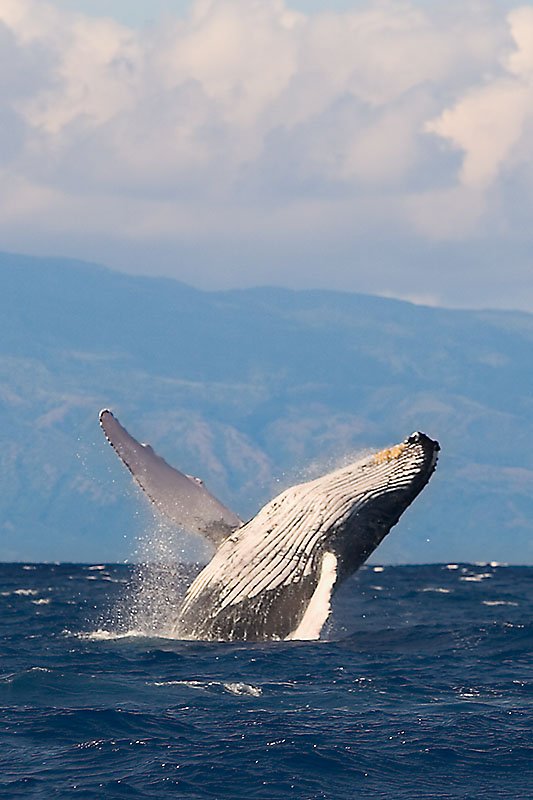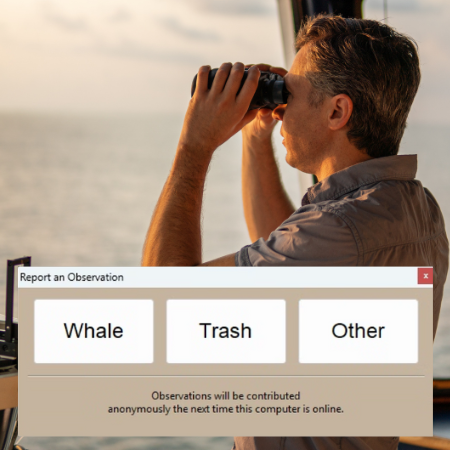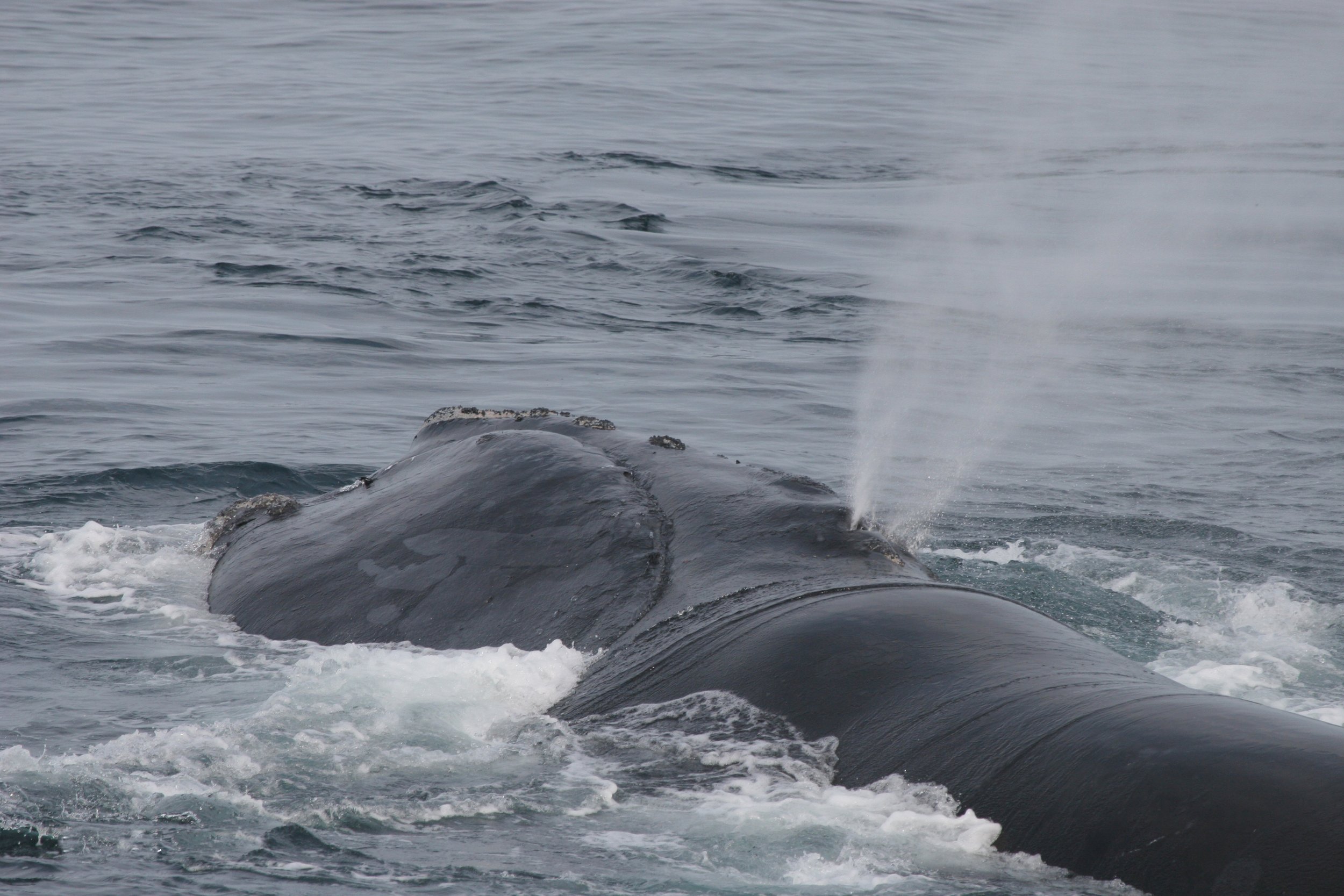Marine Mammal Safety
Ship strike is a major cause of death for great whales (see footnotes 1,2,3). Our sonar can be used to help avoid these ship strikes, but we need to be sure we do so without introducing new problems. Motivation for FarSounder's technology began with an interest in helping vessels avoid hitting whales. We've done this by developing sonar products able to detect many types of whale sized objects. There are many types of sonars, and some are generally believed to be harmful. Our sonar products, however, are not in that class. Our systems operate at sound levels, frequencies, and durations that are safe for marine mammals and are environmentally benign.
The source level of the FarSounder sonars are less than that of which a dolphin uses naturally.
The frequency of the sonar is above the hearing range of any baleen whale and therefore inaudible to these whales.
Even for dolphins and porpoises that may be able to detect the FarSounder sonar ping, none of these marine mammals would interpret a FarSounder sonar as threatening. (Dolphins & porpoises are considered toothed whales)
The source levels and frequencies used in FarSounder technology have been used safely for many years in the ocean on thousands of vessels.
General Sonar Information
Sonars are characterized by a number of parameters. The most important parameter related to marine mammal safety is the source level which refers to the sound intensity level that would be measured at a distance one meter from the transmit transducer. For example, the source level of a bottlenose dolphin has been measured to be 228 dB reference to 1 μPa @ 1m. (see footnote 4)
It is important to note that Decibels (dB) as measured in air are quite different than those in water, as dB is a relative unit and the reference for measurements in air is different than for measurements in water. While the sound source of the bottlenosed dolphin, 228 dB, is obviously safe for them in water, a source level of 228 dB in air would be too loud for them to tolerate well. This is one factor that is sometimes missed by lay people when comparing different sounds in the environment.
The FarSounder-500, FarSounder-1000 and FS-SPS all have a much lower source level than this. So one immediately realizes that the dolphins have a more intense sonar ping than the FarSounder system. Furthermore, sound intensity decreases as range increases. For every doubling of distance, the intensity level decreases by more than 6 dB. In addition to this geometrical spreading, seawater absorbs sound, especially high frequency sound. For example, at the center frequency of the FarSounder's sonars, the absorption is approximately 16 dB per hundred meters.
Injury levels
The injury criteria level for any cetacean such as dolphins and porpoises exposed to sonars has been estimated to be 230 dB re 1 μPa. (see footnote 5) It makes sense that it is above this level since their own sonar pings are below this level - otherwise the animals would injure themselves with their own sonar pings.
FarSounder's source level is well below this threshold. Furthermore, at a range of 100 meters from a FarSounder FS-3 DT system, the intensity level of the sonar ping is less than 150 dB reference to 1 μPa.
Therefore, there is no range at which the FarSounder system would be expected to cause injury to a marine mammal. In fact, because the hearing of the baleen whales is poor above 20 kHz (see footnote 4) and the frequencies of the FarSounder systems are at or above 60 kHz, the baleen whales would not be able to hear the FarSounder pings at all. A recent US Governement analysis of FarSounder's products concluded that for those marine mammals that might be able to hear our signals, they would need to be a few feet from our sonar to possibly have a behavioral impact (see footnote 6). The lack of observable effects in marine mammals from shipboard 50 kHz echosounders supports this conclusion. In short, our systems put much, much less energy into the water than even common echosounders found on most all vessels. (see footnote 7)
FarSounder has made it a priority to design systems that are not only benign to marine mammals, but look to assist in the preservation of them by raising awareness of the ship operator and providing a whole new vision underwater.
Footnotes
International Whaling Commission, http://iwcoffice.org/sci_com/shipstrikes.htm, accessed September 12, 2011.
NOAA Fisheries, http://www.nmfs.noaa.gov/pr/shipstrike/, accessed September 12, 2011.
Laist, DAVID W. et al, 2001, Collisions between ships and whales, Marine Mammal Science, 52-53
Au, W. W. L., Floyd, R. W., Penner, R. H., and Murchison, A. E., 1974, Measurement of Echolocation Signals of the Atlantic Bottlenose Dolphin Tursious truncatus Montagu, in Open Waters, J. Acoust. Soc. A. 56: 1280-1290.
Brandon L. Southall, et al, “Marine mammal noise exposure criteria: initial scientific recommendations,” Aquatic Mammals, 33(4), 411-522, (2007).
U.S. Department of Homeland Security, "Draft Environmental Assessment For Testing Swimmer/Diver Detection Systems", January 2010
For example: fisheries echosounders with a center frequency of 38 kHz and output power of more than 2 kW






